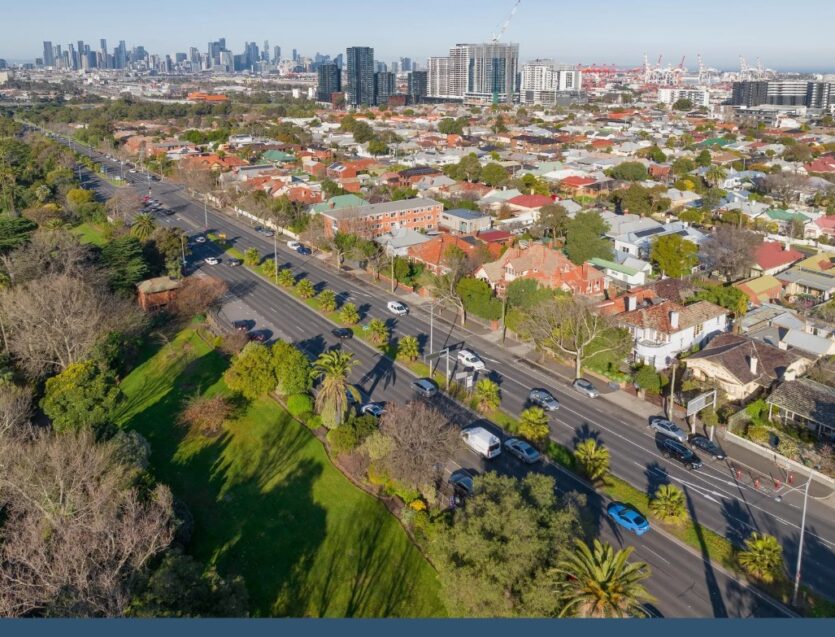Australia may have passed infection peak
Article by: Christopher Joye, Columnist
Source: Australian Financial Review
April 3, 2020
As we move through the eye of the coronavirus storm, two key events will be turning points for markets. The first is when the rate of increase in the number of new infections and deaths in larger economies starts to noticeably decline, signalling that containment strategies are doing their job.
A second will be when these nations begin to transition businesses out of their lockdowns and back to work, albeit on a “new normal” basis that continues to mitigate ongoing transmission. The Chinese and South Koreans have demonstrated that this is possible.
This is why my team has spent significant time developing models to track live infections/fatalities and to predict the peak in the number of new cases. And there is some good news on this front. Notwithstanding the hand wringing about the laconic and lackadaisical Aussie response to the crisis, the infection and death data indicate we are outperforming many others.
The rate of increase in new Australian infections is slower than most of our peers. Even more importantly, the rate at which new infection numbers are decelerating (or at which our curve is flattening) is especially impressive and seems to be broadly tracking South Korean’s containment path, which is arguably the best in the world for any nation that has suffered a substantial outbreak. Perhaps most interestingly, the pace at which Australian deaths have increased is also outperforming almost all other countries save Japan.
There are a range of explanations for these results. Our geographic isolation, dispersion and relatively low urban densities obviously help, as does our modest median age of 38 years. Australia also has low cigarette consumption per capita, which is valuable in this context given the virus’s impact on our lungs. And finally, Prime Minister Scott Morrison and the state premiers have been assertive and pro-active in seeking to cauterise the threat.
The evolution in the infection trajectories in Australia and the US are validating our contrarian March 23 forecast that the peak in the number of new cases should arise in early- to mid-April. Indeed, our analysis suggests that Australia may be passing through its peak right now. The risk in the US is that ad-hoc, state-by-state containment strategies elongate its zenith into the latter half of the month.
With expansive testing ramping up in most countries, there is emphatically no need for protracted, six-month lockdowns, or any suggestion of such. If politicians ignore this advice, they will inevitably pay the electoral price for unnecessarily forcing their economies into deep depressions that inflict permanent damage, the most worrying of which will be a sustained increase in long-term unemployment.
‘New normal’ strategy
Given a median incubation period of five days and the fact that 98 per cent of cases develop symptoms within 12 days, the demonstrably optimal strategy is a four- to six-week hard containment to identify existing infections, followed by a “new normal” whereby the working-age population gets back to business while the genuinely vulnerable, people aged 65 and older, continue to be quarantined until effective anti-viral drugs and/or vaccines are available.A new randomised clinical trial in China has added to the growing weight of evidence to suggest that the existing anti-viral medicine, hydroxychloroquine, is effective in combating the pathogen, as a number of other more anecdotal studies have likewise found.
As we transition out of containment, we need to continue to accelerate testing for the virus as well as for those who have been infected and have antibodies that provide immunity against it. Most nations have been testing only for the virus, not the antibodies, which combined with a general lack of testing coverage for those with mild symptoms or none at all means the reported fatality rates are likely to be overstated.
The opportunities for investors are in those safer and more liquid assets that central banks and treasuries are buying, or securities that are closely linked to those activities. We have seen nation states appropriately seek to guarantee the liquidity of systematically important banks and companies that are required to keep the economy running. Governments are also focused on protecting main street in the form of lay workers and small business.
In between, there is significant risk in the “mid-market” where companies are not too big to fail or too small to matter. Over the next year we might see a sharp increase in credit rating downgrades, defaults and outright corporate failures among these mid-market entities. Virgin Airlines, which has an ASX-listed bond, is one possible example. There are many others.
The government is, for example, proposing to make it much easier for commercial property tenants to break leases because of virus-induced stress. Many of these property owners have leveraged their assets, often via the bond markets. These securities could easily be downgraded and/or go into default as a function of the rental income shock combined with plummeting property valuations.
Double whammy
In the non-bank corporate bond market, many over-leveraged BBB-rated issuers face the threat of a downgrade into the sub-investment “high-yield” band, which will hammer the junk bond sector with a supply shock as it suffers spikes in defaults from a global recession and the collapse in energy prices.
Whereas the credit spreads on high-yield and BBB-rated corporate bonds have climbed only halfway to the heights they reached during the GFC, the spreads on bonds issued by government-guaranteed banks have already burst through these levels.
The US Federal Reserve will shortly start buying highly rated corporate bonds, bank bonds and fixed-interest ETFs. It has already committed to acquiring more than $US200 billion ($330 billion) of highly rated residential mortgage-backed securities (RMBS) and asset-backed securities (ABS).
The Federal Reserve, European Central Bank, Bank of England and Reserve Bank of Australia are all providing banks with exceptionally cheap long-term funding, which obviates the need for them to issue new debt at what would otherwise be punitive levels that would have to be passed on to borrowers.
In Australia, Treasury is also playing its part, investing in high-grade RMBS and ABS via its Australian Office of Financial Management (AOFM). The highly capable AOFM team, which previously managed $15 billion of RMBS, has been quick off the mark, funding $500 million of SME loans with a smaller bank plus almost $190 million in non-bank RMBS backed by home loans.
As with the RBA’s efforts via its Term Funding Facility, there are two core objectives of all these initiatives. The first is to ensure that lenders can continue to access funding (ie liquidity) so households and businesses can do the same. The second is to ensure that the cost of that funding, and hence household and business borrowing rates, is normalised and not materially different to what the community paid before this pandemic brought the global economy to its knees.



Currently, Perth is the capital city that our research is driving our clients to for optimal investment outcomes. Keep an eye out for our upcoming report on Victoria, and the opportunities we feel this market will present from early to mid-2025. CPA Property Reports are the ultimate research tool for those considering an investment into the any Australian property market.